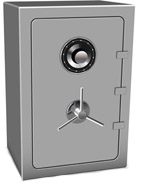Honors Program, UNL

Honors Program: Embargoed Theses
Date of this Version
Spring 2024
Document Type
Thesis
Citation
Cline, G. M. A Kinematic, Kinetic, and Biometric Analysis of Weighted Baseballs as Training Method for Baseball Pitchers. Undergraduate Honors Thesis. University of Nebraska-Lincoln. Spring, 2024.
Abstract
Weighted baseballs have become a popular method for training baseball pitchers. In the basic scientific sense, increasing the weight of baseballs ultimately increases the amount of torque in the joints of action (elbow and shoulder) during the throwing motion. This metric helps provide insight into kinematic mechanisms behind weighted baseballs training method. Further insight into this metric can allow us to determine if an unsafe level of torque is being produced during training, and which weights can be considered safe or unsafe.
Another aspect to consider is the kinetic impact that increasing the weight of baseballs thrown has on the mechanism of the pitch. Speed is the main kinematic consideration that pitchers and coaches have when evaluating training methods for pitching. This metric provides a basis of much deeper discussion involving what weights can provide the athlete with a more safe, effective, and game-like method of training that will best prepare them for competition.
The last measure of consideration is biometric, specifically the timing of the foot strike in relation to release. This is a crucial part of the pitching motion, as its consistency helps a pitcher to be uniform in their mechanics. Identifying precision here allows coaches and athletes to determine how game-like the training method really is.
Kinematic, kinetic, and biometric aspects of increasing baseball weights provide a great deal of insight into its suitability as a safe, effective, and realistic training method. To measure these, 6 male subjects were gathered at Nebraska Athletic Performance Lab to each throw three sets of ten pitches. In each set, the subjects would throw each baseball, of weights from 3 ounces to 12 ounces, one time. For each pitch, the valgus torque of the elbow, total torque of the shoulder, speed of the pitch, foot strike time, and release time were all calculated and recorded. All subjects had prior experience with baseball, but none participated in competitive baseball at the time of testing. Results showed varying levels of kinematic, kinetic, and biometric data between subjects, likely from their lack of current exposure to baseball activities. This leads to the conclusion that no recommendation can be made on the safety or effectiveness of the weighted baseball training method for pitchers given the data from this study.


Comments
Copyright Grant Cline 2024.